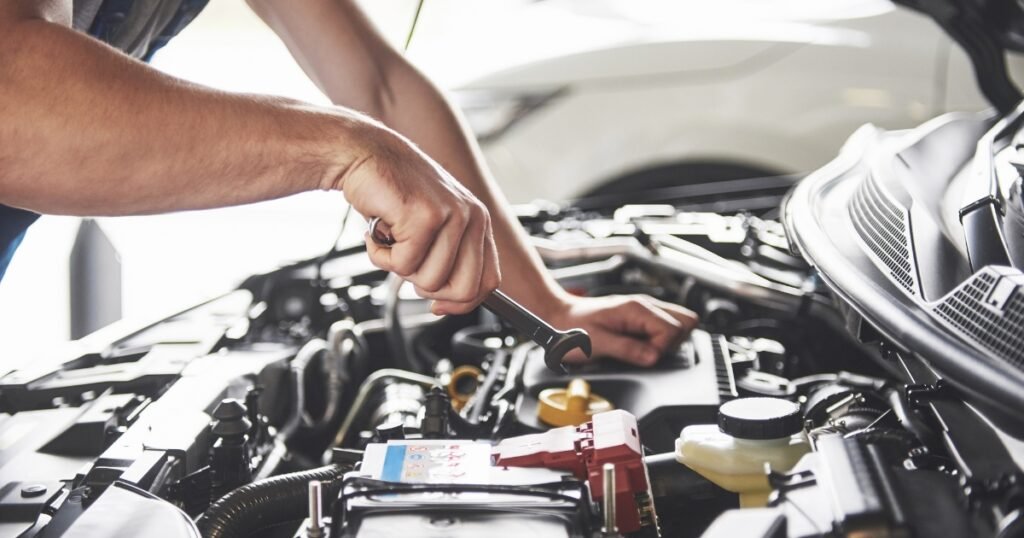The quality of parts is an important factor in maintaining the aesthetic and performance of your classic car. Whether it’s a collector’s vehicle that you’re restoring or a standard vehicle with worn-out parts, vintage parts should be the parts you choose to use. Unfortunately, many inferior imitations and reproductions are all over the vintage car market, and when used on your vintage car, they will adversely affect the functionality and value of the car. So, how does one tell real from fake on the classic car market? This guide will help you navigate the minefield and spot genuine parts as you begin your search for vintage parts. Here are your first steps:
1. Research the Make & Model of Your Car
Before you start looking for older car parts, it is helpful to know the make and model of your car. Knowing what car you are working on will help you find parts that fit your specific car. Most parts are produced for specific models of cars, and even small discrepancies to the design or materials could affect the performance or looks of your car significantly.
Begin your research in the car owner’s manual. Then wherever possible, consult with specialists or enthusiasts in groups specific to your make and model. You should be looking for pertinent information about what part numbers, specifications, and parts restoration requirements are recommended for your car.
2. Verify the part number
Checking the part number is one of the easiest ways to verify the authenticity of used auto parts. Most genuine parts have a specific identifying number which is recorded in the manufacturer’s catalog. Usually, these numbers are engraved or stamped on the part.
To verify the authenticity of a number, check the internet or contact the manufacturer. A part that has no or insufficient information is likely a fake or a poor quality substitute.
3. Look for Brands, Markings, and Logos
To identify reputable sellers of vintage auto parts, check if they have a trademark or a specific brand marking. Such marks are critical in determining authenticity. Look for well-known logos or stamps of automotive brands like GM, Ford, and other vintage car manufacturers. A poorly stamped, worn, or absent logo could indicate counterfeits.
Original vintage car parts are often engraved and marked permanently for many years. Counterfeit copies of poor quality often bear light, ephemeral, and easy-to-remove labels to save money.
4. Check the Material Quality
Parts from old cars, especially parts from the early decades, were manufactured with materials that were readily available and thoroughly tested decades ago. In examining a part, pay close attention to the materials used. Genuine parts are typically made of top-grade steel, aluminum, rubber, or plastic, depending on the specific part in consideration.
Low-quality or replica parts may use materials that are less expensive and degrade with time or are not up to the original standards. Used car parts intended for engine parts can have thicker, heavier castings, whereas replicas can utilize lighter, more fragile metals. Take the part and hold it in your hand, feel its weight, and examine the surface finish. Genuine parts will be heavy, and the surface will be smooth and lasting.
5. Purchase from Trusted Sellers
While crucial as your inspection is, so too is the source from which you purchase your vintage car parts. Always opt for reputable suppliers or restoration specialists who specialize in selling authentic vintage car parts. Vintage car dealers tend to have a wide selection of original parts and are thoroughly familiar with the products they deal in.
Many websites, auto auctions, and specialty stores offer classic car parts, but be sure to read customer reviews and ratings. A company with positive reviews from other classic car owners is most likely to offer genuine, quality parts.
End Note
Sorting out genuine parts from counterfeit old car parts in the classic car market takes attention to detail, knowledge of your vehicle, and a discerning eye for quality. As recommended, employing part numbers, checking the original components, and purchasing parts from reputable vendors will see you avoid the hassle of replica parts and keep your classic running and looking good. A bit more effort upfront will enable you to appreciate your vintage car for years to come and be sure that you still have a genuine piece of motor history.

